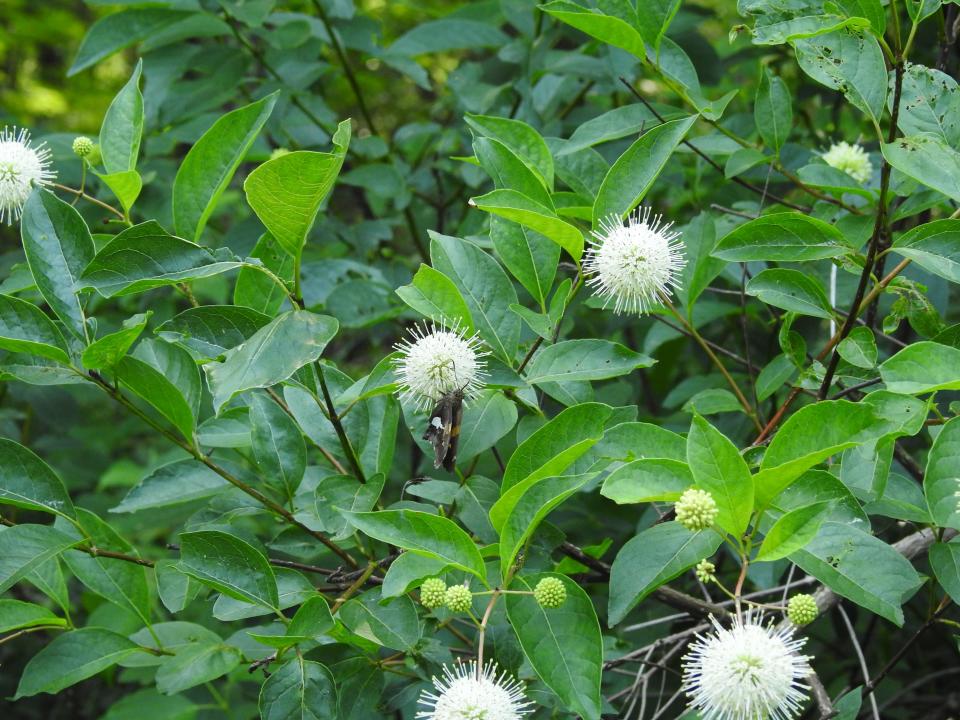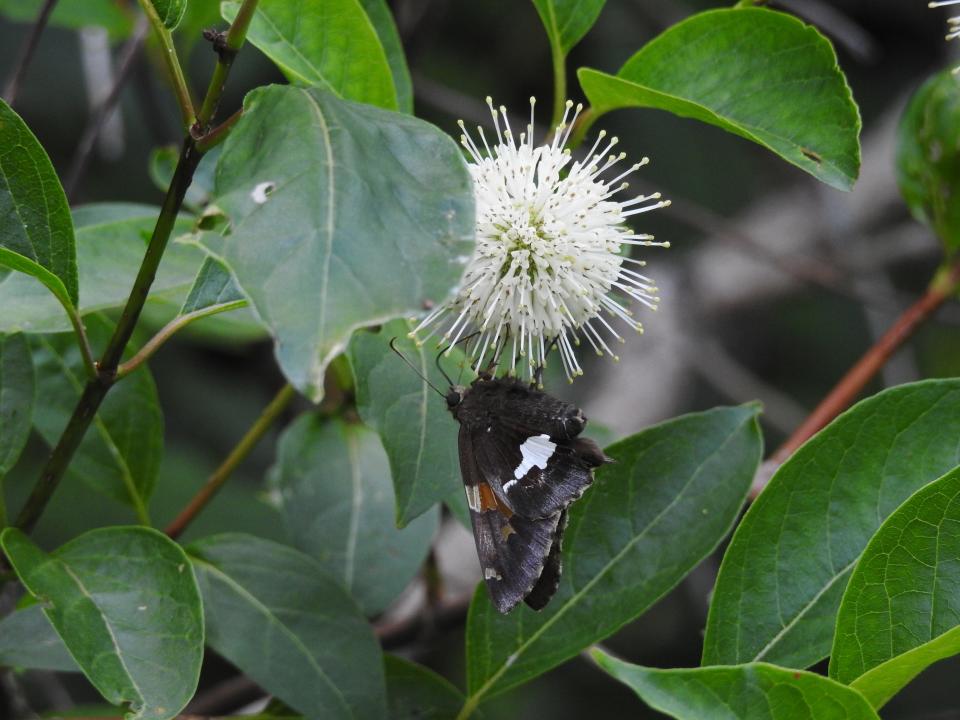Cute as a buttonbush: Native wetlands shrub benefits wildlife in so many ways
One of my favorite destination plants when I kayak through local wetlands is buttonbush (Cephalanthus occidentalis).
This is a very distinctive medium-sized native shrub, the distinctive part being the flowers when young sort of resemble a button. The flowers start out as small pale green spheres that are barely visible amidst the leaves. These little spheres mature into a spectacular globe of radiating tube-shaped white flowers that are a pollinator magnet when in full bloom.
I’ve sat and watched bumblebees settle on a buttonbush plant and pick their way along, spending more time on the flowers than on neighboring flowering plants, indicating what a rich source of pollen and nectar these are. Its other common names, honey-bells or honey-balls, speak to this and to me, are more descriptive of this plant. I really don’t see much resemblance to a button, but perhaps I lack enough imagination.

Known as a honey-plant, buttonbush attract a wide variety of bees, but not only bees. Butterflies, moths, beetles, wasps and flies are attracted to the fragrant, nectar-packed flowers. Buttonbush foliage is host to the larval stages (caterpillars) of local butterflies and moths. Sphinx moths, prometheus moths and wood nymph butterflies are a few local beauties that seek out buttonbush to lay their eggs upon. In the fall, globular clusters of small reddish-brown nutlets replace the flowers.
More Nature News: Rare northern blazing stars found in abundance on Maine's Kennebunk Plains
Each flower can produce up to 400 seeds, which attract a variety of wetland birds such as bitterns, wood ducks, black ducks, Canada geese and Virginia rails. The shrub itself also provides shelter for local wildlife and protects stream and pond edges from erosion. This is definitely a plant that we want to encourage in our wild places.
Buttonbush is native to a large part of eastern North America and found as far west as parts of California. If you have some wetlands or parts of your backyard that retain some moisture, think about planting some. Make sure to get the native, wild-type plant. Cultivars are often bred to be showier at the expense of the pollen or nectar content.

The Wild Seed Project has a great description of growth requirements as well as lots of other interesting information about this shrub.
Buttonbush is happy to have very "wet feet," its roots and lower branches seasonally inundated, even submerged. Henry David Thoreau noticed a large raft of buttonbush, uprooted by flooding in the Sudbury River, that replanted itself farther downstream. Even with this tolerance for saturated sites, Cephalanthus occidentalis is easily grown in humus-y, moisture-retentive garden soil.
More: Woodchucks are 'essentially giant ground squirrels' you learn to live with
The shrub is an appropriate candidate for planting near roof eaves which will supply regular early-morning drips of condensation. A downspout drainage area could also be channeled to supply extra hydration, but once established, the buttonbush is resilient and content with even moisture.”

I can vouch for the requirement for moisture-retentive soils. I have attempted to grow buttonbush twice in my sandy, not-moisture retentive soil and lost both plants. When I try again, which I will because I love buttonbush so much, I am going to supplement the soil with lots of organic material and plant them with my turtleheads (another wetland plant), which are the only perennials I routinely water, drought or no drought.
I’ve noticed red maple leaves beginning to redden in my neighborhood. It seems a little bit early, this might be due to the drought, but it is clear that fall is on its way. The profusely blooming goldenrods and flowering asters are additional easy-to-find harbingers of autumn. Buttonbush is another - this is a late season pollinator plant that helps our local insect and bird pollinators begin to get ready for winter. Look for it in a wetland near you.

Susan Pike, a researcher and an environmental sciences and biology teacher at Dover High School, welcomes your ideas for future column topics. Send your photos and observations to spike3116@gmail.com. Read more of her Nature News columns online at Seacoastonline.com and pikes-hikes.com, and follow her on Instagram @pikeshikes.
This article originally appeared on Portsmouth Herald: Buttonbush, a native wetlands shrub, benefits pollinators, wildlife

